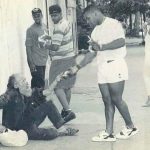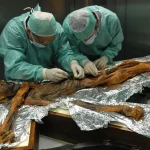A Stolen Moment: How a Single Victorian Photograph Reveals a Timeless, Tender Love

Related Videos:
Sometime in the restrictive late Victorian era, a rare and powerfully tender photograph was captured in a studio, defying the rigid social conventions of the time. This simple portrait of two young men, whose names are now lost to history, offers a moving glimpse into a bond that was stronger than the rules and silences of their world.

In an era when most studio portraits were stiff, serious affairs designed to convey status and formality, this image is striking for its intimacy. One man is seated comfortably, almost casually, in the lap of the other, their bodies touching. Both men are smiling—a rarity in period photography—as though the camera had caught them in the middle of a private, secret joke.

The Clerk and the Musician
The story woven into the background of the image suggests a love found in stolen moments. The man seated was reportedly a clerk, known for his quiet demeanor and neat handwriting. The man holding him was a musician, whose talent filled parlors with song.

Together, they navigated a world that likely would never have understood, much less accepted, their relationship. Yet, in each other’s company, they found a refuge. They shared laughter, safety, and the crucial courage to be their authentic selves, if only during their private, shared hours. The portrait itself was not just a picture; it was a promise—an assurance that, even in silence and secrecy, they belonged to one another.

A Timeless Mark
Over a century later, the names have faded and their voices are long gone, but the photograph remains. It speaks louder than any history book, capturing two men who were unafraid for a single, critical moment, choosing joy in a world of profound restraint.

This image, which was once a deeply private memory, has now become a timeless, resonant reminder. It confirms that love, in any form, leaves its indelible mark—a mark waiting for those in the future willing to look closely and see past the conventions of the past.











